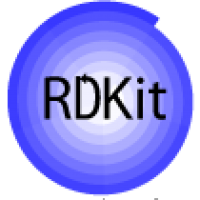-
What is the batch computing limit?
In order to make sure that the system works properly, and to avoid system suspended animation or session-timeout.
We set a limit of the number of molecules uploaded for each calculator. The default is 5000.
-
What is the calculation step for the interaction features?
The calculation process for BioCCI, BioPPI and BioDDI is similar to each other.
Step 1: The molecular structures or sequences of the associated chemicals, proteins, and DNAs/RNAs in the chemical-chemical, protein-protein, and DNA/RNA-DNA/RNA interaction networks are provided to calculate the corresponding molecular features.
Step 2: The adjacency list file and the molecular features in Step 1 are provided to calculate the final interaction features.
The calculation process for BioCDI, BioCPI and BioDPI is similar to each other.
Step 1: The molecular structures or sequences of the associated chemicals, proteins, and DNAs/RNAs in the chemical-chemical, protein-protein, and DNA/RNA-DNA/RNA interaction networks are provided to calculate the corresponding molecular features.
Step 2: The molecular structures or sequences of another molecular object from interaction data are provided to calculate the corresponding molecular features.
Step 3: The adjacency list file and the molecular features in Step 1 and 2 are provided to calculate the final interaction features.
For detailed description, please refer to the documentation section.
-
How are the names of the calculated features defined?
For BioTriangle, the molecular features or interaction features calculated by different tools have their corresponding names. For BioChem, BioProt and BioDNA, the feature names have very visualized meaning any people could understand. For BioCCI, BioDDI, BioPPI, BioCPI, BioCDI, and BioDPI, the interaction feature names are defined by two feature names of two molecular objects in the interaction sample.
-
How many features could be calculated by the third way in the process of interaction feature calculation?
The third way is generated by the outer product of two feature vectors from those chemicals, proteins, and DNAs/RNAs.
The number of generated features by the third way may be very tremendous, so the users should apply it according to their needs.





